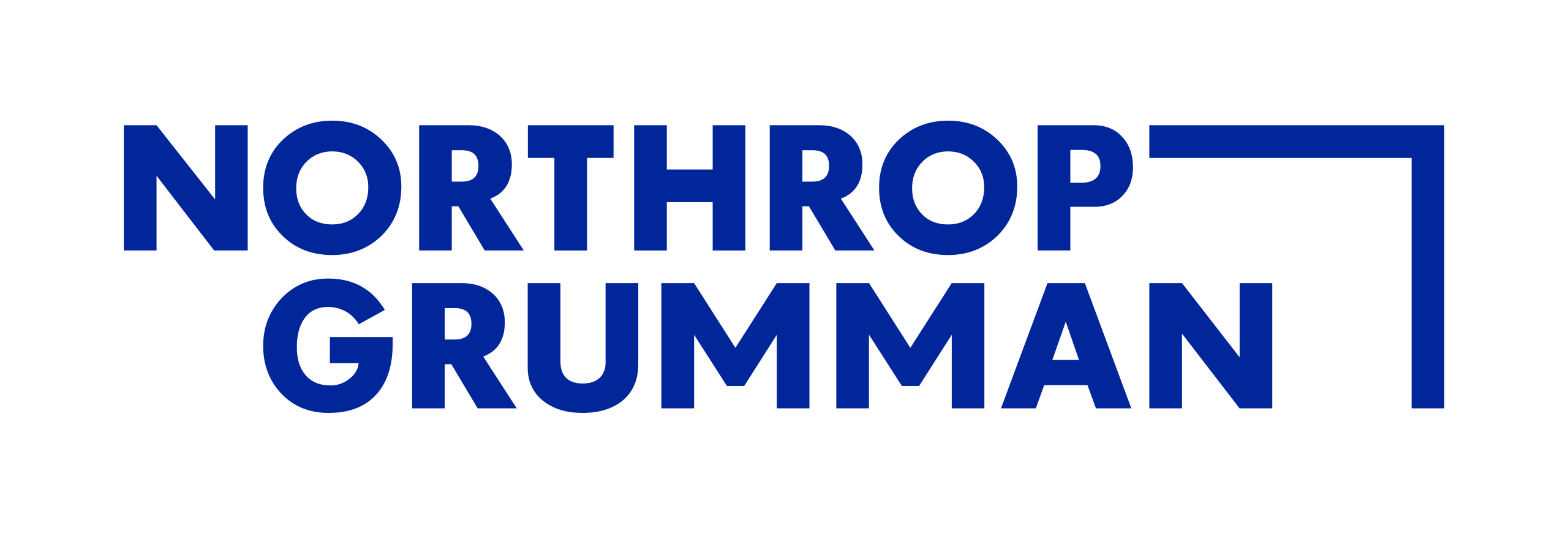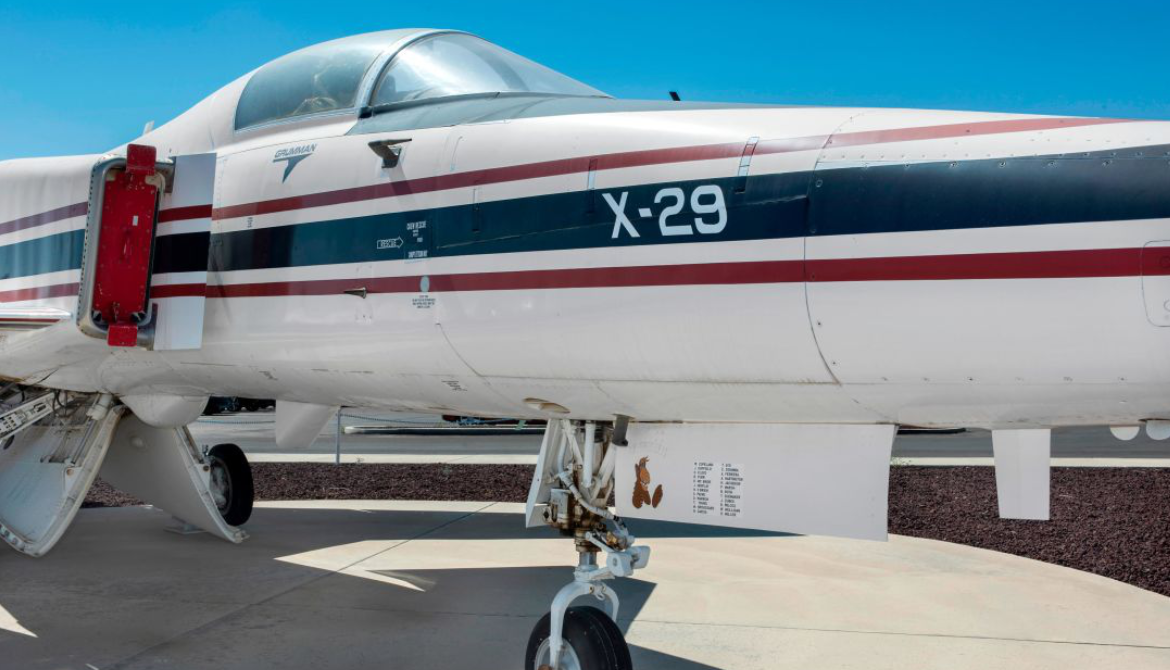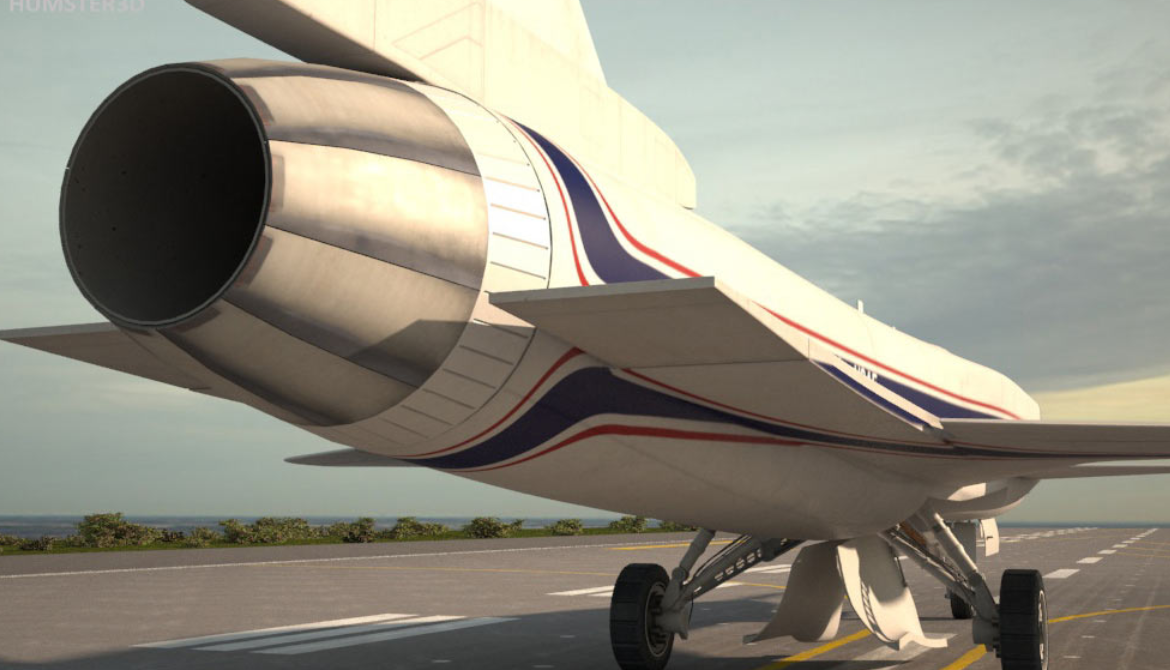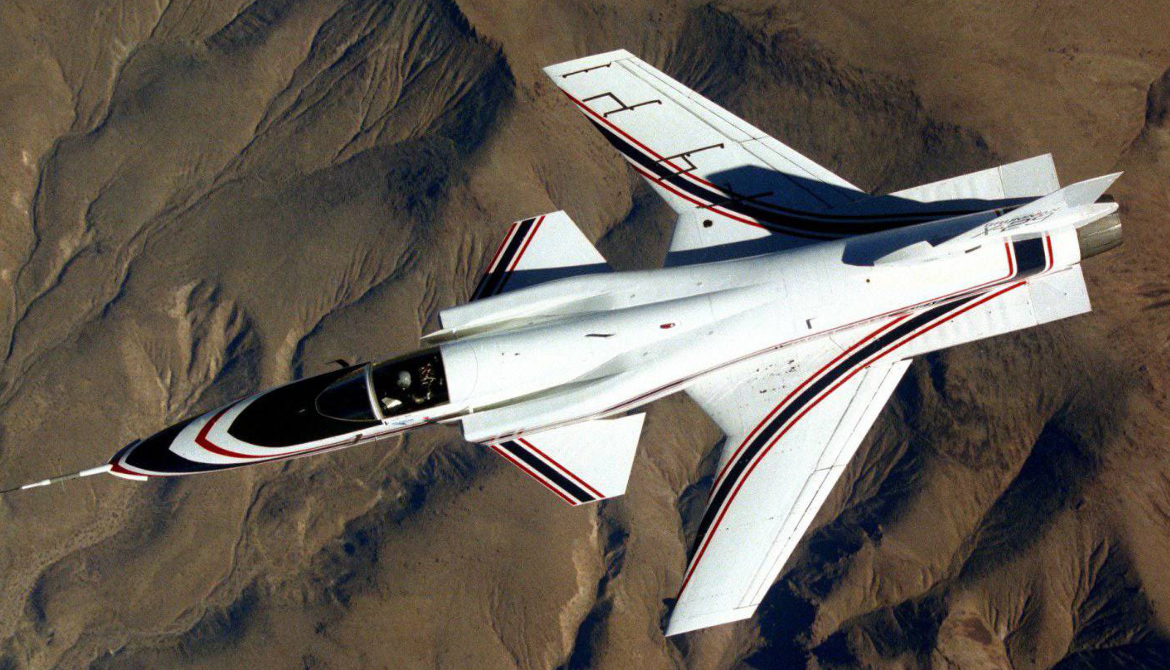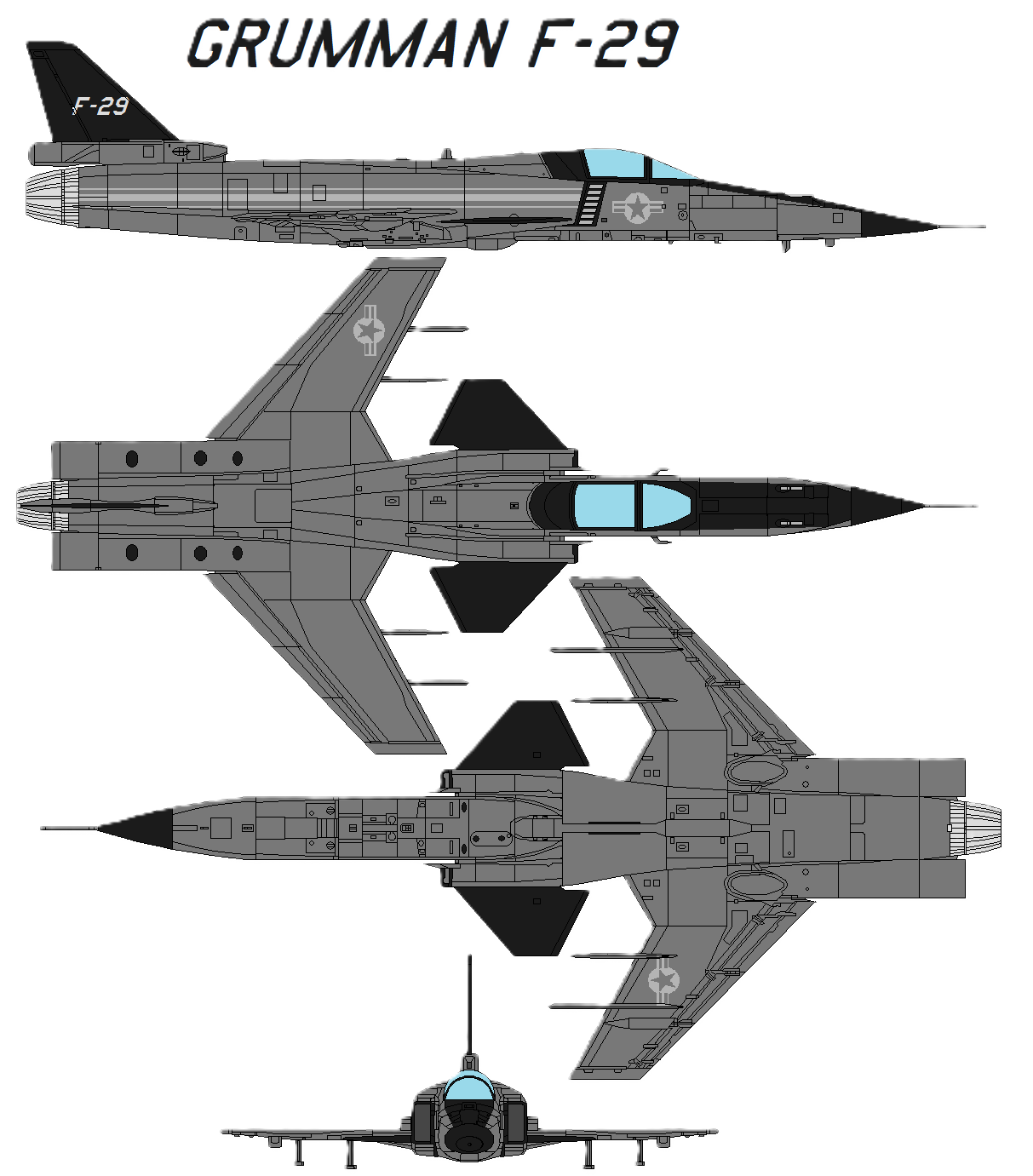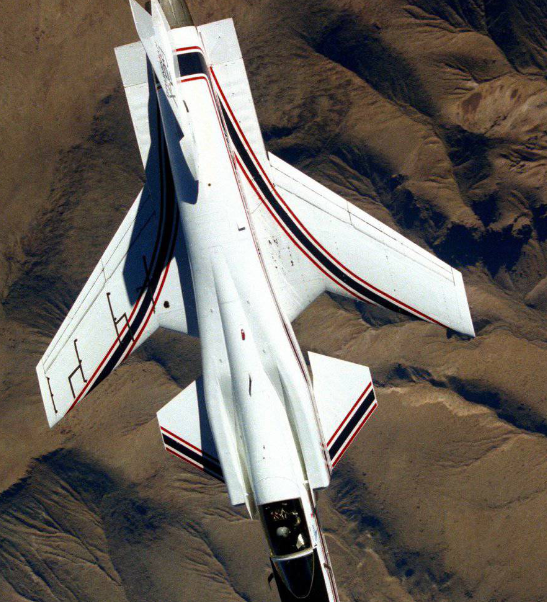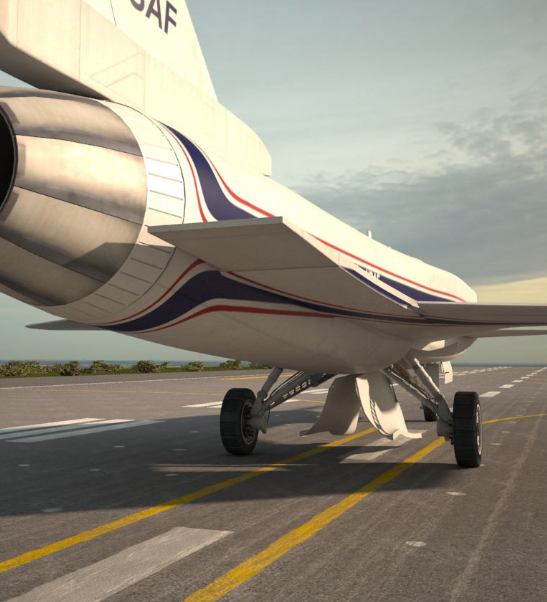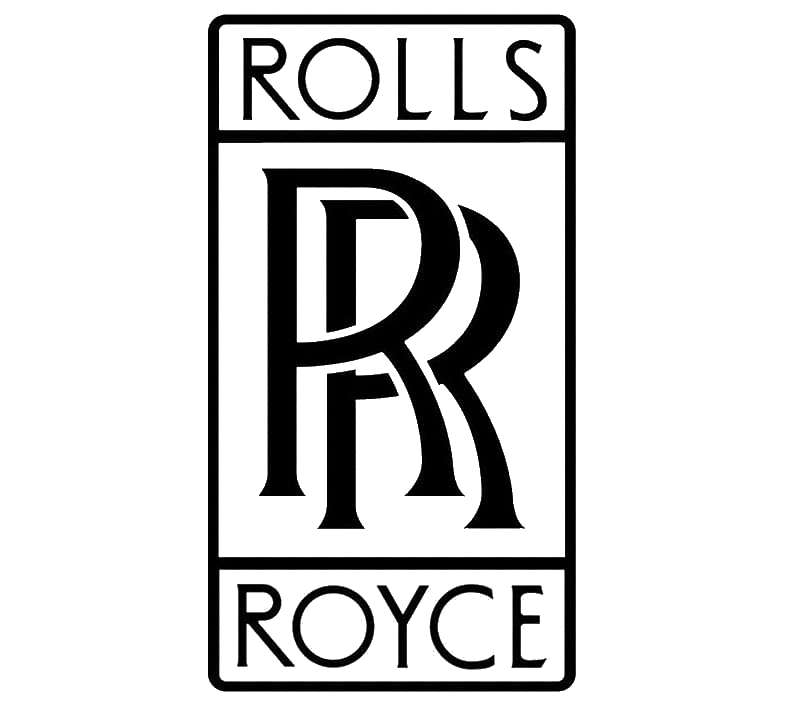Grumman Aerospace Grumman X-29 Demo
 |
|
| A Grumman X-29 in flight | |
| Role | Experimental aircraft |
|---|---|
| National origin | United States |
| Manufacturer | Grumman |
| First flight | 14 December 1984 |
| Status | Retired |
| Primary users | United States Air Force NASA |
| Number built | 2 |
.
History Grumman X-29 American experimental aircraft,
that tested a forward-swept wing
Operational history
The first X-29 took its maiden flight on 14 December 1984 from Edwards AFB piloted by Grumman's Chief Test Pilot Chuck Sewell. The X-29 was the third forward-swept wing jet-powered aircraft design to fly; the other two were the German Junkers Ju 287 (1944) and the HFB-320 Hansa Jet (1964). On 13 December 1985, an X-29 became the first forward-swept wing aircraft to fly at supersonic speed in level flight.


The X-29 began a NASA test program four months after its first flight. The X-29 proved reliable, and by August 1986 was flying research missions of over three hours involving multiple flights. The first X-29 was not equipped with a spin recovery parachute, as flight tests were planned to avoid maneuvers that could result in departure from controlled flight, such as a spin. The second X-29 was given such a parachute and was involved in high angle-of-attack testing. X-29 number two was maneuverable up to an angle of attack of about 25 degrees with a maximum angle of 67° reached in a momentary pitch-up maneuver.
0
KmTake off Distance
0
KmRange
0
MachAircraft Speed
0
Max Crew
Photo Gallery
Grumman X-29 American experimental aircraft,
that tested a forward-swept wing


Grumman Aerospace Corporation
Grumman X-29 American experimental aircraft that tested a forward-swept wing
General characteristics
- Crew: 1
- Capacity: 4,000 lb (1,814 kg) payload
- Length: 53 ft 11.25 in (16.4402 m) including nose probe
-
-
-
- 48 ft 1 in (15 m) fuselage only
-
-
- Wingspan: 27 ft 2.5 in (8.293 m)
- Height: 14 ft 3.5 in (4.356 m)
- Wing area: 188.84 sq ft (17.544 m2)
-
Powerplant
- Empty weight: (6,260 kg)
- Max takeoff weight: (8,074 kg)
- Fuel capacity: (1,804 kg) in two fuselage bladder tanks and two strake integral tanks
- Powerplant: 1 × General Electric F404-GE-400 afterburning turbofan engine, 16,000 lbf (71 kN) with afterburner
Specifications
- Maximum speed: 956 kn (1,100 mph, 1,771 km/h) at 33,000 ft (10,058 m)
- Maximum speed: Mach 1.6
- Range: 350 nmi (400 mi, 650 km)
- Service ceiling: 55,000 ft (17,000 m)
Avionics
-
- Litton LR-80 AHRS
- Magnavox AN/ARC-164 UHF
- Teledyne RT-1063B/APX-101V IFF/SIF
- Honeywell triple redundant fly-by-wire FCS
-
-
Links to Youtube & Others
wo X-29As were built by Grumman after the proposal had been chosen over a competing one involving a General Dynamics F-16 Fighting Falcon. The X-29 design made use of the forward fuselage and nose landing gear from two existing F-5A Freedom Fighter airframes (63-8372 became 82-0003 and 65-10573 became 82-0049).
Grumman X-29 experimental aircraft
The X-29 is described as a three surface aircraft, with canards, forward-swept wings, and aft strake control surfaces,
Youtube Link
The high pitch instability of the airframe led to wide predictions of extreme maneuverability. This perception has held up in the years following the end of flight tests.



